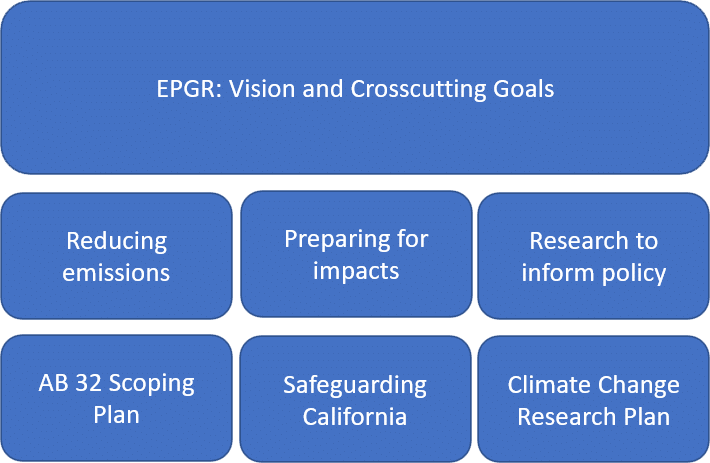The least polluted cities holding center stage in ranked order in California: Santa Rosa, Salinas, Santa Maria, and Red Bluff, CA; each captures the attention of those searching for clean air.
The ranking order changes according to the Air Quality Index.
For instance, six other areas demonstrate good air quality; Three Rivers, Kaweah, Lemon Cove, Running Springs, Skyforest, and Calimesa, California. Santa Rosa is 57% less densely populated than Salinas.
The last Census taken in 2010 of Santa Rosa, CA showed 162,647 residents compared to a current population of 174,972. Salinas, CA in the 2010 Census showed 147,074 residents; that compared to the 2000 Census showing 151,060, with a current population of 157,380. Let’s break down the leading contenders, and learn about Santa Rosa, Salinas, Santa Maria, and Red Bluff, CA. You can learn more about the other cities listed by checking out the links throughout this article, and you can see more links in the reference section at the end of this article. Keep in mind rankings change as cities work to lower emissions to improve air quality.

As we break the statistics down further, we see a population density in Santa Rosa, CA of 4,237 with Salinas, CA at 6,666. In comparing land area of the two cities: Santa Rosa, CA at 41, and Salinas, CA at 24; median age in Santa Rosa 37.1, and Salinas residence with a median age of 29.3 years. Females make up 50.85% in Santa Rosa, and females make up 29.3% in Salinas. Males make up 49.15% of the population in Santa Rosa, and 50.37% in Salinas, CA.
The map below shows the location of Santa Rosa and Salinas, CA in proximity to other cities in the state.

The United States Census Bureau, listed the city of Salinas with a total area of 23.2 square miles (60 km2), 99.84% of it land and 0.16% of its water.
For a more comprehensive look at Salinas, CA follow this link.
Note projections for Santa Rosa:
At the first five-year update of the plan, in 1996, the Council extended the planning period by ten years, renaming it Vision 2020 (updated to Santa Rosa 2020, and then again to Santa Rosa 2030 Vision), and added more land and population. Now the City projects a population of 195,000 in 2020.
For a more comprehensive see Santa Rosa, CA by following this helpful link.
The following California cities ranked by the EPA (Environmental Protection Agency) for Clean
Air Standards in 2014:
Salinas, CA in 2014 ranked for cleanest metropolitan areas in the country for Ozone, with Redding-Red Bluff, CA ranked 7th, and Salinas, CA ranked 11th of 25 cities as the cleanest metropolitan areas in the US for 24-hour particle pollution.
As we break the statistics down further, we see a population density in Santa Rosa, CA of 4,237 with Salinas, CA at 6,666. In comparing land area of the two cities: Santa Rosa, CA at 41, and Salinas, CA at 24; median age in Santa Rosa 37.1, and Salinas residence with a median age of 29.3 years. Females make up 50.85% in Santa Rosa, and females make up 29.3% in Salinas. Males make up 49.15% of the population in Santa Rosa, and 50.37% in Salinas, CA.
The map below shows the location of Santa Rosa and Salinas, CA in proximity to other cities in the state.

Santa Maria and Salinas ranked Cleanest U.S. Cities for Short-term Particle Pollution in 2014.
Santa Maria is near the Southern California coast in Santa Barbara County. It is about 150-miles northwest of downtown Los Angeles and 5 Star Car Title Loans – Los Angeles Branch.
In 2016 the population was estimated at 106,290; making it the most populous city in the county and the Santa Maria Santa Barbara, CA Metro Area. The city is famous for its wine industry and Santa Maria-style barbecue.
Red Bluff is on the northern edge of the Sacramento Valley and is the third largest city in the Shasta Cascade region. It is about 31 miles (50 km) south of Redding, 40 miles (64 km) northwest of Chico, and 131 miles (211 km) north of Sacramento.

Santa Rosa, Salinas, Santa Maria, and Red Bluff, California enjoy great climate, superb resources, fresh quality food choices, excellent medical services, and shopping adventures, college town atmosphere, all near the Bay area.
Salinas, located in Northern California, known as the Salad Bowl of the World, produces approximately 70% of the nation’s lettuce.
Climate Research Plan for California
The three interconnected elements of California climate policy and associated
comprehensive strategies, under the umbrella of environmental vision and goals.
EPGR=Environmental Goals and Policy Report
1. Reducing emissions: GHG emission reduction to reduce the impacts of climate change
Assembly Bill 32, the California Global Warming Solutions Act of 2006, requires a reduction of GHG emissions in California to 1990 levels by 2020. Executive Order S-3-05 specifies further reductions to 80 percent below 1990 levels by 2050. AB 32 also requires the State to draft a Scoping Plan that guides California’s emission reduction goals and provides a comprehensive overview of the broad suite of state policies and programs designed to reduce GHG emissions. The California Air Resources Board (ARB) prepared the initial Scoping Plan in 2008 and has released the First Update to the Climate Change Scoping Plan (Scoping Plan Update) (California Air Resources Board 2008, 2014).
2. Preparing for impacts: Increasing preparedness and resilience to safeguard California from a changing climate
The Safeguarding California Plan (California Natural Resources Agency 2014) updates the 2009 California Climate Adaptation Strategy (California Natural Resources Agency 2009) in light of advances in climate science and risk management options. The Safeguarding California Plan describes climate risks, work done to date, and recommendations for actions still needed across nine different sectors (Agriculture, Biodiversity and Habitat, Emergency Management, Energy, Forestry, Oceans and Coastal Ecosystems and Resources, Public Health, Transportation and Water). The Safeguarding California Plan also includes seven cross-sector strategies to safeguard California.
3. Research to inform policy and research informed by policy needs
A strong research program to inform climate policy, advance climate change science, and support the development of tools that will effectively reduce emissions and safeguard California
California has invested significant resources in order to understand the impacts of climate change on California’s natural and built environment,
public health, and key economic sectors. Monitoring and numerical modeling of basic climate change parameters such as temperature, precipitation, and weather patterns form the basis for all other climate research that the State pursues. California’s climate research helps develop and evaluate the strategies and technological advances needed to achieve emission reduction goals. The State has completed three climate change assessments. These assessments provide up-to-date research that informs and responds to California’s policy needs.
Current Stats on Air Quality in California
Geographic Area: California
Summary: by CBSA
Year: 2017 (Annual statistics for 2017 are not final until May 1, 2018)
Exceptional Events: Included (if any)
Measure
EPA Air Quality Standards:
Carbon Monoxide: 35 ppm (1-hour), 9 ppm (8-hour)
Nitrogen Dioxide: 100 ppb (1-hour), 53 ppb (annual)
Ozone: 0.12 ppm (1-hour), 0.070 ppm (8-hour)
Sulfur Dioxide: 75 ppb (1-hour), 140 ppb (24-hour), 30 ppb (annual)
PM2.5: 35 ug/m3 (24-hour), 12.0 ug/m3 (annual)
PM10: 150 ug/m3 (24-hour)
Lead: 0.15 ug/m3 (3-month avg)
Statistics in red are above the level of the respective air quality standard.
See this link for updates every hour
https://www.epa.gov/outdoor-air-quality-data/air-quality-statistics-report
See this helpful link for the full report http://www.climatechange.ca.gov/climate_action_team/reports/CAT_research_plan_2015.pdf
Please see sample tables below for a closer look at the EPA Air Quality Standards data by City in California.
Air quality indices (AQI) are numbers used by government agencies to characterize air quality.
The United States Environmental Protection Agency (EPA) uses the following AQI:
Partial Table Sample Showing EPA Air Quality Standards
(Statistics in red are above the level of the respective air quality standard)
An openness to the sea in all the coastal cities listed and discussed throughout this article, enjoy a sea-breeze second to none. The least polluted cities in California work hard to ensure air quality meets or exceeds EPA standards. All cities mentioned are relentless in their awareness of the importance of clean air, and their commitment and dedication to the task have not gone unnoticed.
References
- Cleanest City in California, Santa Maria
- https://en.m.wikipedia.org/wiki/Santa_Maria,_California
- California Statistics & Analysis, US News & World Report
- http://www.stateoftheair.org/2014/city-rankings/cleanest-cities.html
- https://www.usnews.com/news/best-states/california
- https://www.usnews.com/news/best-states/articles/methodology
- 10 Most Polluted Cities in California
- https://qz.com/963089/california-is-home-to-eight-of-the-10-cities-in-america-where-air-pollution-is-worst/
- Most Polluted Cities in California
- https://www.usatoday.com/story/news/nation/2017/04/19/most-polluted-cities-california/10065102/
- Ten Most Polluted Cities in the US
- https://www.washingtonpost.com/news/morning-mix/wp/2015/04/30/the-10-most-polluted-cities-in-the-u-s/?utm_term=.98d5571e90ee
- Pollution in California
- https://en.m.wikipedia.org/wiki/Pollution_in_California
- Spending California US
- https://www.usgovernmentspending.com/california_state_spending_pie_chart
- Stats on California
- https://mobile.nytimes.com/2016/10/12/us/california-latino-voters.html
- Census for California (Census by each City in California)
- http://www.togetherweteach.com/TWTIC/uscityinfo/05ca/capopr/05capr.htm
- Top 100 Cities in California
- https://en.wikipedia.org/wiki/List_of_cities_and_towns_in_California
- http://www.seecalifornia.com/california/top100-city-populations.html
- Comparison between Santa Rosa, CA and Salinas, CA
- http://www.bestplaces.net/compare-cities/santa_rosa_ca/salinas_ca/people
- http://worldpopulationreview.com/states/california-population/cities/
- California Pros and Cons
- https://www.google.com/amp/www.bestplacestolivenow.com/moving-to-california-pros-and-cons/amp/
- Top 10 US Cities
- https://www.moving.com/tips/the-top-10-largest-us-cities-by-population/
- Inside California Manufacturing
- http://www.industryweek.com/blog/manufacturing-golden-state-summit-shows-how-make-california-thrive
- Top 20 Most Innovative Industrial 2018
- http://www.newequipment.com/research-and-development/meet-2018-ned-innovation-finalists
- Climate Research Plan for California
- http://www.climatechange.ca.gov/climate_action_team/reports/CAT_research_plan_2015.pdf
- http://www.usa.com/rank/california-state–air-quality-index–city-rank.htm
More Information
- Three Rivers, CA
- http://www.usa.com/three-rivers-ca.htm
- Kaweah, CA
- http://www.usa.com/kaweah-ca.htm
- Lemon Cove, CA
- http://www.usa.com/lemon-cove-ca.htm
- Running Springs, CA
- http://www.usa.com/running-springs-ca.htm
- Skyforest, CA
- http://www.usa.com/skyforest-ca.htm
- Calimesa, CA
- http://www.usa.com/calimesa-ca.htm
[yasr_overall_rating]
[yasr_visitor_votes size=”medium”]




